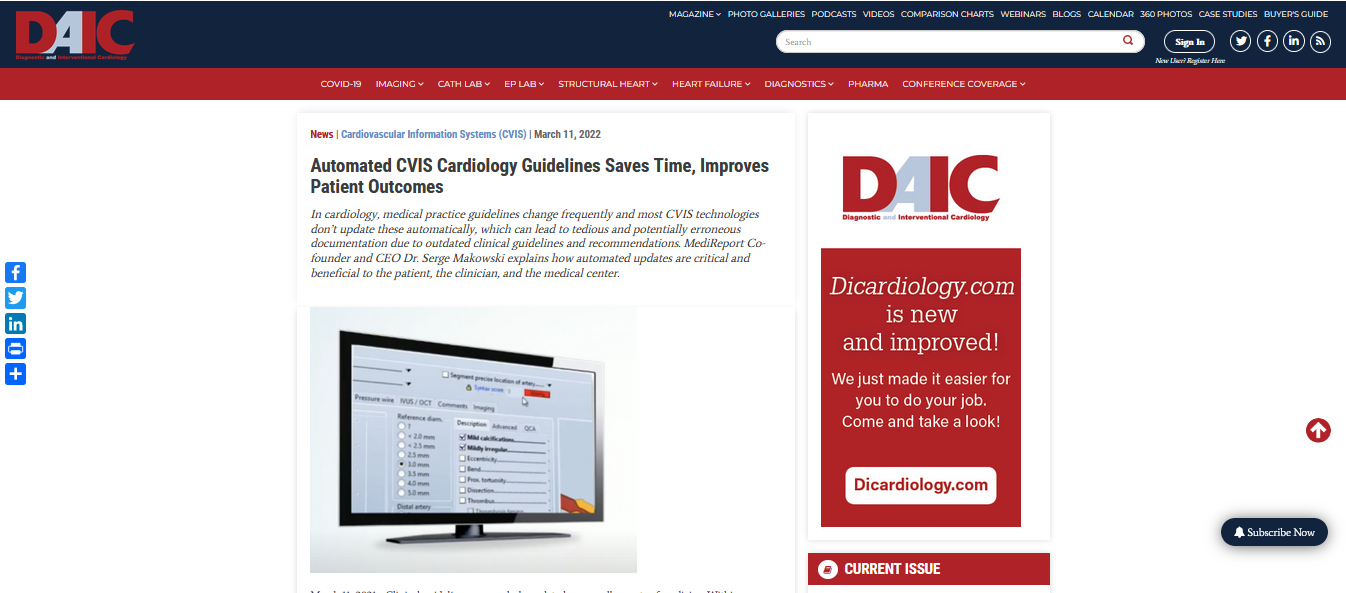Automated CVIS Cardiology Guidelines Saves Time, Improves Patient Outcomes
Published in Dicardiology, March 2022
As cardiology is an innovation and research-driven field, practice guidelines regularly undergo review and updating. However, most CVIS technologies don’t update these guidelines automatically, which can lead to tedious and potentially erroneous documentation due to outdated guidelines and recommendations. MediReport Co-founder and CEO Dr. Serge Makowski explains how automated updates of clinical guidelines are critical and beneficial to the patient, the clinician, and the medical center.
Many hospital systems find it challenging to stay up to date with rapidly evolving cardiology guidelines and in Cath labs using CVIS that don’t update the guidelines automatically, loss of data, data becoming obsolete, and recollection of the wrong data are very real risks.
CardioReport 360™, a unified CVIS provides continuous and automated integration of the latest guidelines and classifications seamlessly with no lag time or intervention from an organization’s IT department, avoiding time lost to development, testing, and installation.
Such a centralized system enables the clinician to document all appropriate information, provide care based on the newest evidence-based practice, and generate automatic reports for review by providers and others. When guidelines are updated, they’re automatically modified within the software, preventing documentation errors, helping deliver better care and allowing providers to receive appropriate reimbursement.
CardioReport 360™ is the ideal choice for doctors because of:
- Its flexible and dynamic protocol and dictionary,
- MediReport clinical support team automatically updates dictionaries, remotely, for all users, as they review the latest medical literature,
- Partnerships with medical device manufacturers which allows the system to update their catalogs automatically.
“By seamlessly integrating the new practice guidelines, CardioReport 360™ gives clinicians access to the latest techniques, newest devices, and most recent recommendations, giving them the right information at the right time to deliver the best quality of care possible.” Serge Makowski
To find out more, check out the article in Diagnostic and Interventional Cardiology (DAIC).

MARCH 11, 2022
